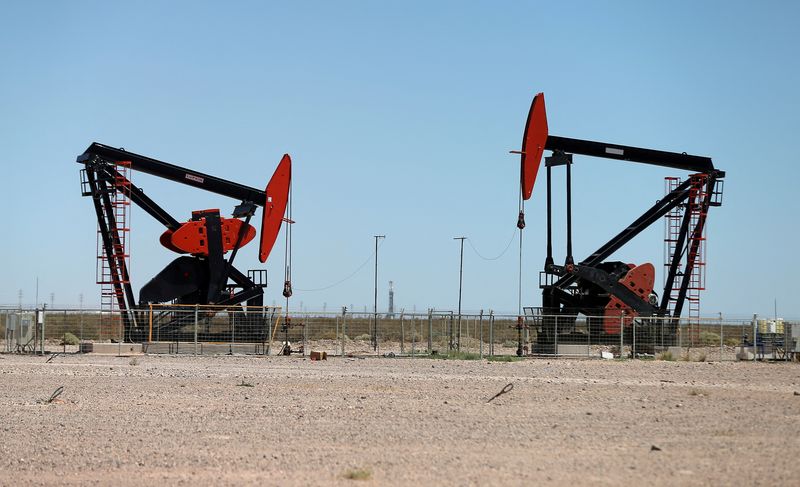Commodities
Oil settles down ahead of OPEC+ meeting, posts weekly loss

By Nicole Jao
NEW YORK (Reuters) -Oil prices fell on Friday and posted a weekly loss as investors awaited an OPEC+ meeting on Sunday that will determine the fate of the producer group’s output cuts.
futures for July delivery were down 24 cents, or 0.3%, to $81.62 a barrel, while the more liquid August contract was down 77 cents, or 0.8%, at $81.11. U.S. West Texas Intermediate (WTI) crude futures fell 92 cents, or 1.2%, at $76.99.
For the week, Brent settled down 0.6%, with WTI posted a 1% loss.
“It’s the trepidation ahead of the OPEC meeting over the weekend,” said Matt Smith, lead analyst at Kpler, referencing the potential for the group to do something unexpected. “It’s widely expected that they’ll roll over the cuts,” he added.
Markets are awaiting the OPEC+ meeting on Sunday, with the producer group working on a complex deal that would allow it to extend some of its deep oil production cuts into 2025, sources told Reuters.
Saudi Arabia invited ministers to gather in person in Riyadt for the June meeting in a last minute change of plans, sources said on Friday. The gathering is still officially scheduled as an online meeting.
production rose in March to its highest level this year, data from the U.S. Energy Information Administration (EIA) showed on Friday, while fuel product supplied, a proxy for demand, fell 0.4% to 19.9 million barrels per day.
The oil market has been under pressure in recent weeks over the prospect of U.S. borrowing costs staying higher for longer, which ties down funds and can curb oil demand.
Both oil benchmarks were on course for their biggest monthly declines since December after dropping in the previous session on a surprise build in U.S. fuel inventories.
“U.S. summer travel season kicked off with Memorial Day weekend, with initial indications showing strong driving and flying activity — but fuel use looks more muted, implying efficiency gains,” Citi analysts wrote in a note.
Oil prices rose briefly after U.S. government data showed inflation tracked sideways in April, strengthening traders’ bets that the Fed would deliver a long-awaited rate cut in September.
Euro zone inflation rose more than expected in May, Eurostat data showed. The increase is unlikely to deter the European Central Bank from cutting borrowing costs next week, but it could slow the rate cutting cycle.
U.S. energy firms held oil and gas rig count – an early indicator of future output – steady at 600 in the week to May 31, energy services firm Baker Hughes said in its closely followed report on Friday.
Oil rigs fell by one to 496 this week, while gas rigs rose by one to 100.

However, the total rig count fell for the third month in a row in May, dropping by 13, the most in a month since August.
Money managers raised their net long U.S. crude futures and options positions in the week to May 28, the U.S. Commodity Futures Trading Commission (CFTC) said on Friday.
Commodities
Oil prices rise; U.S. crude inventories plunge, Russia-Ukraine truce eyed
Commodities
India’s Reliance to stop buying Venezuelan oil over US tariffs, sources say
Commodities
Oil prices climb on Venezuela supply worries

 Forex3 years ago
Forex3 years agoForex Today: the dollar is gaining strength amid gloomy sentiment at the start of the Fed’s week

 Forex3 years ago
Forex3 years agoUnbiased review of Pocket Option broker

 Forex3 years ago
Forex3 years agoDollar to pound sterling exchange rate today: Pound plummeted to its lowest since 1985

 Forex3 years ago
Forex3 years agoHow is the Australian dollar doing today?

 Cryptocurrency3 years ago
Cryptocurrency3 years agoWhat happened in the crypto market – current events today

 World3 years ago
World3 years agoWhy are modern video games an art form?

 Commodities3 years ago
Commodities3 years agoCopper continues to fall in price on expectations of lower demand in China

 Economy3 years ago
Economy3 years agoCrude oil tankers double in price due to EU anti-Russian sanctions























